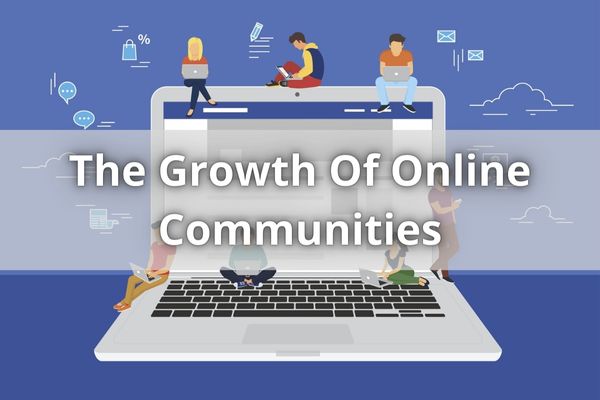The Impact Of The Dot-Com Bubble On The Internet
The Impact Of The Dot-Com Bubble On The Internet. The dot-com bubble of the late 1990s and early 2000s had a huge impact on the internet, from how it was used to how people interacted with it. Many of us still feel the effects of this period today – for better or worse! We have probably all had some experience with both perspectives at some time in our life.
Let’s examine the dot-com bubble’s consequences in more detail and how they affected the internet as we know it today since they have broad-reaching effects.
The Causes Of The Dot-Com Bubble
The dot-com boom of the 1990s, I think it’s safe to say, was a turning point for the internet, and its effects can still be seen today. We need to examine the root causes of the dot-com bubble in order to comprehend how this occurred.
The euphoric enthusiasm for technology stocks on Wall Street drove stock prices to unsustainable levels and fueled an influx of venture capital into startup companies with little regard for their actual worth or potential profits. This led to an atmosphere where investors were eager to invest in any firm that had a website, regardless of whether it had a viable business strategy.
These internet firms were able to raise hundreds of millions of dollars in a single day without having to reveal their financial details or provide evidence that their products actually functioned because to a mix of wild speculation and a lack of regulations.
While some people made a fortune by investing in these fledgling companies, many others lost everything when those same companies folded as quickly as they rose up.
It’s clear that this period shaped our current understanding of the internet economy and changed Wall Street forever – from raising awareness about innovation investments to cautioning us against excessive risk-taking. With this newfound knowledge, we can now take a closer look at how exactly this event impacted the internet.
The Impact Of The Dot-Com Bubble On The Internet
The internet was significantly impacted by the dot-com bubble, which had long-lasting consequences that are still visible today. Investors who had placed large bets on these equities suffered enormous losses as a result of the stock market bubble, which led to the demise of several online enterprises. Due to the quick rise and collapse of dot-com stocks, it significantly affected the value of equities markets throughout the world.
Here’s how:
- Many start-ups were funded with venture capital during this period leading up to the crash, resulting in financial instability across various sectors of business which overvalued tech companies.
- This made it difficult for more established businesses to compete against younger tech startups, as they lacked access to large amounts of capital invested into them from venture capitalists.
- Additionally, when the Dot-Com Bubble burst it left investors with much less money than they would have otherwise had if their investments had not gone bust.
- Even though some companies survived after the crash, others failed or drastically downsized operations due to lack of funds or customers – both of which played an important role in driving growth prior to the bubble bursting.
The consequences included widespread layoffs and bankruptcies among tech firms as well as decreased investor confidence in speculative trading and high risk investing strategies such as those employed by Internet entrepreneurs back then. These events created greater caution within investment circles, as people began looking more closely at fundamentals before making decisions about whether or not certain assets were worth investing in – something we still see today when evaluating potential investments and opportunities on the open market.
With increased scrutiny came increased venture capital funding processes that required more detailed plans from applicants seeking financing for projects, including the influence of government funding on the internet. This process was meant to ensure profitability even under unfavorable economic conditions like those experienced during the Dot-Com Bubble era.
Increased Venture Capital

I had heard about venture capitalists, but I never thought that the dot-com era would bring so many of them to the technology sector.
Venture capitalist poured money into internet-based companies in hopes of getting a return on investment during this period. These investments allowed for more businesses to start up and innovate within their respective markets. The sheer amount of capital available led some dot-com companies to grow too quickly or become overvalued.
This was often caused by unrealistic expectations from investors who were hoping for quick gains rather than long-term growth. However, many new startups achieved success and longevity due to careful consideration of market trends as well as sound business practices in the internet’s emergence with mobile technology. The influx of venture capital provided a great opportunity for many entrepreneurs and tech innovators to pursue their ideas and build upon existing technologies.
As such, it kickstarted an exciting time of growth and innovation in the industry which still continues today. With these opportunities, there came risks which both investors and startups needed to be aware of when making decisions during this period.
Moving forward, we will explore how these risks shaped the landscape moving ahead into further development and innovation in technology.
Innovation And Growth In Technology
Having seen a great influx of venture capital, the dot-com bubble had an undeniable impact on internet technology. With this new financial backing, companies were able to invest heavily in research and development for emerging technologies related to the internet. This influx of money allowed businesses to innovate at unprecedented rates, creating products that would quickly become essential parts of our lives today.
For instance, online marketplaces like Amazon and eBay transformed eCommerce by allowing people to buy things without ever leaving their homes. These services have become more popular, not just in the United States but also internationally. The resulting increase in global competition encouraged more innovation from developers all over the globe, leading to many other technological breakthroughs associated with the internet.
These advancements included faster communication speeds and the impact of search engines on web improved search engine capabilities which made it easier for users to find information they needed instantly. All of these improvements combined helped expand both the scope and reach of the internet like never before. This newfound access opened up opportunities for people everywhere who now had easy access to previously unavailable resources including educational materials, news content, entertainment options, and much more.
As a result of this expansion we have seen tremendous growth in how people use the internet now compared to what was available during the time of dot-com bubble – something that could not have been achieved without its influence on technology and innovation.
Expansion Of The Internet And Its Reach
I remember the days when the internet was first taking off after the dot-com bubble. It seemed like suddenly everyone was investing in tech stocks, or starting an internet company with dreams of becoming a millionaire overnight. We had no clue where this would go or how much it would impact our lives in the future.
Over the past two decades, the internet’s growth has been nothing short of remarkable. It has developed into a potent weapon that affects practically every aspect of our lives today from its humble origins as a method to transmit information without paper.
All of these activities are made possible by the internet, including online shopping, streaming movies and TV shows, chatting with friends on social media (where the internet revolutionized by social media), and searching for information.
This technology revolutionized not only our personal lives but also businesses around the world who now rely heavily on digital advertising and cloud computing services. With just one click of a button, companies can reach millions of potential customers through targeted ads and other digital marketing techniques – something that wasn’t possible before the dot-com bubble changed everything.
The increased use of digital advertising is transforming how companies do business everywhere.
Increased Use Of Digital Advertising
The internet was significantly impacted by the dot-com bubble. The late 1990s internet boom was quickly followed by a sharp fall in investment following the 2000 stock market disaster. Companies that were heavily invested in tech stocks suddenly lost billions of dollars overnight, leading to an overall downturn in business activity and spending.
Because they no longer had access to big quantities of money for typical advertising campaigns, businesses had to get more innovative with their marketing methods. Digital advertising grew in popularity as a result since it was more affordable and effective at reaching specific audiences than conventional media.
Website traffic was significantly boosted by social media platforms like Facebook and Twitter, which also helped businesses advertise their services and goods for little or no money. These changes caused by the dot-com bubble ultimately opened up new opportunities for businesses who wanted to take advantage of this shift towards online engagement.
This paved the way for the emergence of e-commerce, where individuals and small businesses alike could start selling goods directly from their own website without having to invest heavily into brick-and-mortar stores or high priced ad campaigns.
The Emergence Of E-Commerce

The dot-com bubble significantly affected the internet, particularly in terms of e-commerce.
Many firms and company owners around this time saw a chance to profit from the stock market by making investments in internet businesses that provided fresh goods or services. As a result, individuals started using the internet for purposes more than merely research and communication, which led to the fast expansion of e-commerce.
Millions of dollars were being invested in these digital firms at their height, with little thought given to the prospective returns. Unfortunately, many of these companies collapsed during the dot-com boom due to bad management and insufficient profitability.
Despite this failure, it was now obvious that the internet could be utilized as a platform for purchasing and offering services—something that had not been conceivable before to the development of e-commerce during the dot-com era. As a result, even if the dot-com bubble bust undoubtedly resulted in some losses, it had a largely beneficial impact on the internet.
It became clear that it could be used as a potent instrument for completing commercial transactions as well, rather than only being considered as a platform for information exchange and pleasure.
With this newfound insight came great potential – one which would soon lead us down a path towards what we today call ‘the rise of social media’.
The Rise Of Social Media
The dot-com bubble of the late 1990s and early 2000’s was a period in which stock prices for technology, telecommunications companies, and Internet-based businesses grew significantly faster than their actual value. This led to an unsustainable market that eventually crashed, leading to the collapse of numerous dot-com boom companies. Many investors were left with significant losses due to this crash.
However, despite this economic downturn caused by the stock market crash, there still remained great promise for those who had faith in the potential of the internet. As many failed brick and mortar businesses moved online during this time, so too did certain other aspects of life – such as communication between people located all over the world.
This was the first instance of what is now often referred to as social media, which are online communities created to enable widespread digital interaction between people.
We can now communicate and share ideas more readily than ever thanks to the emergence of these new media. With its newfound popularity, it wasn’t long before social media began driving cultural changes across society at large.
As we move forward into our next section about the growth of online communities, it is important to remember how far we have come since then.
The Growth Of Online Communities

The dot-com bubble had an undeniable impact on the internet. It marked a new era of internet-based companies, many of which sought to capitalize on the potential of online communities.
The dot-com era saw not only a burst in tech startups that used innovative methods for social networking but also a surge in digital money and investments. This period was characterized by unprecedented growth across multiple sectors; from e-commerce websites to streaming services, businesses were being created faster than ever before.
With this newfound attention came rapid change: suddenly, people could shop remotely or communicate with each other without ever leaving their homes. The internet transformed from a mysterious idea to one of the most significant technologies we use today in only two short decades.
Because of the innovations achieved during this time, businesses can now reach more customers than ever before, enabling anybody with a computer and an internet connection to interact with like-minded people worldwide. This shift has undoubtedly redefined how we interact both digitally and in person.
Overall, these changes have enabled us to create meaningful connections through technology and revolutionized traditional business models along the way.
Now let’s look at what effect this had on established industries…
The Impact On Traditional Businesses
Well, the growth of online communities through the dot-com bubble was quite remarkable.
The unprecedented stock market surge and its associated euphoria saw many tech stocks triple or even quadruple in value within a matter of weeks. Many people were buying tickets on the open market, investing billions into the market with little thought for what may come next. But as it turns out, this was only one part of the story.
It wasn’t long before things began to take a turn and the true impact of the dot-com bubble started to become more evident. Businesses had invested heavily in technology and infrastructure during this period, expecting large returns that never materialised. As a result, traditional businesses faced huge losses once those investments failed to pay off due to an oversupply of goods and services on the marketplace.
The effect was devastating for many companies who had put their faith in the promise of technological progress but found themselves unprepared when reality set in.
As time went by, we increasingly learnt about just how damaging these effects could be – not only financially but also socially and culturally – as organisations scrambled to recover from their losses while trying to navigate a rapidly changing landscape.
The Aftermath Of The Dot-Com Bubble

I vividly remember the bursting of the dot-com bubble in 2000 and how it changed my perception of the internet. The aftermath of this event was far reaching, with catastrophic consequences for many internet-based companies who had been riding high on an unsustainable wave of speculative investment.
To understand what happened, let’s look at a definition of a bubble: when prices reach levels out of proportion to their intrinsic value due to speculation or hype fueled by market sentiment. The dot-com bubble was no different—it saw technology start-ups raising huge amounts of capital from investors eager to get in on the action before the inevitable crash that followed.
As stock prices skyrocketed, companies were able to raise even more money and go public—all without having any profits or reliable revenue streams. However, as soon as investors started questioning these practices, the markets crashed and those same tech stocks plummeted in value.
It was a painful lesson for all involved; one that showed us just how fragile our economy can be if we rely too heavily on speculation rather than sound financial principles. Many people lost significant sums of money but also learned valuable lessons about investing — lessons which have served them well ever since.
Conclusion: What made the dot-com bubble burst?
In conclusion, the internet and how we use it have been impacted by the dot-com bubble. Both existing organizations and those seeking to enter the internet market can benefit greatly from the lessons learnt during this time. I believe that if more companies had taken heed of these warnings, there would have been far fewer casualties in terms of failed startups during the early 2000s.
The dot-com bubble also provided us with new industries such as e-commerce, social media, streaming services, and so much more. All these changes were enabled by advances in technology which allowed consumers access to previously unimaginable levels of convenience and entertainment options.
In essence, the legacy of the dot-com bubble will continue to shape our lives for many years to come.







